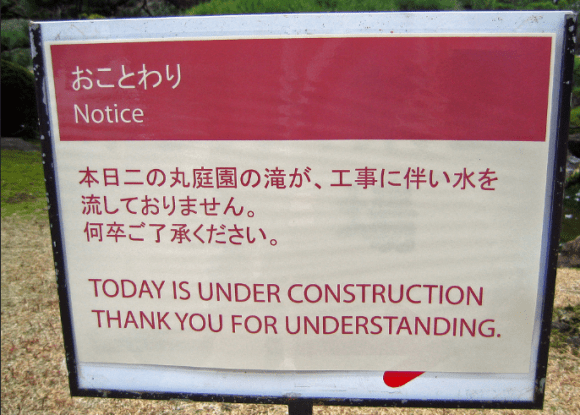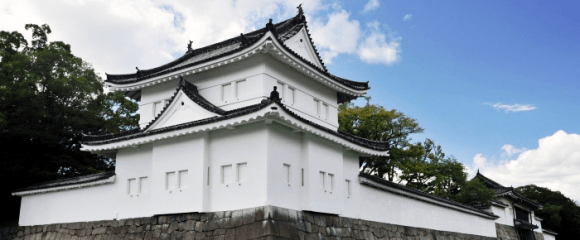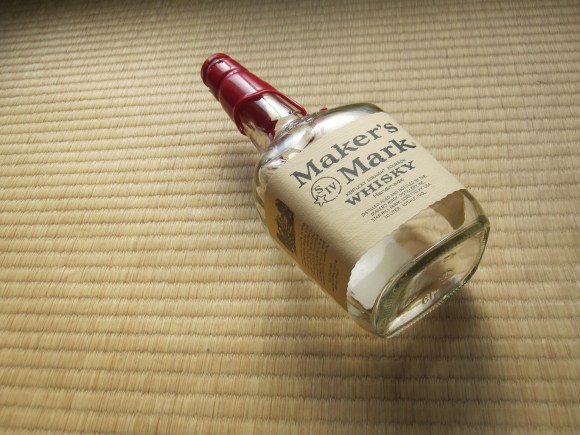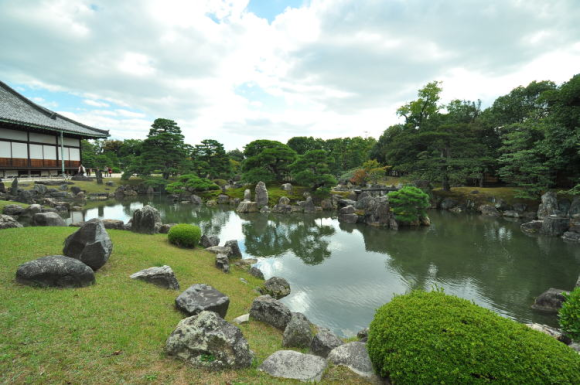
Over the years, Japan has earned a reputation for its awkward command of English, with results ranging from the perplexing to downright hilarious. The country’s translation screw-ups are so common that they’ve even earned their own collective name, “Engrish.”
But for all the sites that poke fun at Engrish, it’s almost impossible to find one that talks about why it happens. So today we’re offering a bit of explanation along with the laughs, as we look at a sign in Japan that informs English-reading passersby that “Today is under construction.”
The photo of the sign has actually been floating around online for some time now, but it’s recently caught the attention of Japanese Internet users who are linguistically savvy enough to appreciate the humor. The snapshot was originally taken by a foreign visitor to Kyoto’s Nijo Castle, one of the most popular tourist destinations in a city packed with sightseeing wonders.
As one of the few castles built in a rare period of peace during Japan’s feudal era, Nijo Castle is surrounded by extensive gardens, and in one you’ll find a waterfall.
The castle receives thousands of visitors every year, and rather than deny travelers a chance to see the historic site by regularly shutting it down, maintenance and gardening often take place even as guests mill about. So when workmen had to temporarily stop the garden waterfall, they put up a sign, the Japanese on which means:
“Please understand that, due to maintenance, the waterfall in the outer garden is not flowing today.”
For the sake of international travelers, there was also an English explanation. It was kind of the castle’s curators to consider those who don’t speak Japanese, but sadly the English translation didn’t come out quite right.
So how exactly did things end up like this? Well, most sightseeing spots in Japan don’t keep an in-house translator on the payroll, and if you’ve ever read an English tourism pamphlet that sounded natural, it was probably the work of a contracted freelance translator.
While translation isn’t on the same lucrative level as fields such as finance, law, and medicine, trying to find a qualified translator willing to accept an offer for a one-sentence project is pretty hard to do. So in the case of these super-short translations, they’re usually done by whichever Japanese staff member has the best command of English and also has time to spare, which in routinely overworked, understandably sleepy Japan really cuts down the candidate pool.
Okay, so we see how the translation probably got passed off to someone who was less than an ideal match for the job, but how did it get so off course? The person who decided on “Today is under construction” has got to be a real moron, right?
▼ “Tanaka, get over here! I’ve got a job for you.”
Not really. For example, imagine if I asked you to translate the sentence, “Due to maintenance, the waterfall in the outer garden is not flowing today” into a foreign language that’s not really your forte. Being eloquent becomes a secondary goal, and the main purpose is just to get the point across. So maybe you cut “Due to maintenance, the waterfall in the outer garden is not flowing today” down to “Today, the waterfall is under maintenance.”
That’s probably what whomever wrote the sign’s English version was going for. The problem is, Japanese and English grammar sometimes work very differently from one another. In Japanese, you can often cut the subject out of a sentence completely and it still makes perfect sense. For example, when my wife comes home tonight and I tell her, “I’ve been drinking bourbon since noon,” I can omit ore/I from the sentence, and just tell her “Hiru kara baabon wo nondeiru.” As long as I haven’t mentioned anyone else who I could possibly be talking about in the conversation, the “I” is implied by context.
▼ Plus the smell of hard liquor on my breath
Knowing that, it’s not too difficult to see how “Today, the waterfall is under maintenance” got chopped down once again (losing its comma in the process) and became “Today is under maintenance.”
But it’s not just grammar where English and Japanese are different, but sometimes in how vocabulary works, too.
In English, we usually use “maintenance” for fixing something that already exists, and “construction” for building something new. Sometimes in Japanese, though, the word kouji, which is used on the top half of the sign from Nijo Castle, can mean either “construction” or “maintenance,” particularly if you’re talking about something like a building or its fixtures, for which a manmade garden waterfall applies.
▼ A garden with this much rockwork requires a lot of kouji.
Again, bearing in mind that the intended message of the sign’s English version has been simplified from the Japanese original, we’re not dealing with someone who’s truly bilingual here. Crack open a Japanese-to-English dictionary, and 99 times out of 100 the first definition for kouji that jumps out is going to be “construction.”
So if we track the translation process from start to finish, it ends up like this:
Due to maintenance, the waterfall in the outer garden is not flowing today
↓
Today, the waterfall is under maintenance.
↓
Today is under maintenance.
↓
Today is under construction.
And hey, let’s not overlook that whoever wrote the English version knew that the literal translation of the Japanese phrase Douzo go-ryoushou kudasai, “Please consent,” sounded too heavy-handed in English and instead rendered it as the much more hospitable “Thank you for understanding.”
So the next time you come across some Engrish, go ahead and chuckle, because a lot of it is legitimately funny. But at the same time, take a second to remember that the cause might be someone pulling double duty outside their comfort zone.
In any case, if you need to read the translation in the first place, this…
…is probably still a lot more intelligible to you than this…
…so you may as well be happy for what you’ve got.
Photo source: J Town Net, Flickr
Top image: Flickr
Insert images: Nijo Castle, Blogspot, RocketNews24, Zaq







 What’s wrong with English education in Japan? Pull up a chair…
What’s wrong with English education in Japan? Pull up a chair… Brilliant Art Aquarium takes over Nijo Castle in Kyoto for a spellbinding nocturnal event
Brilliant Art Aquarium takes over Nijo Castle in Kyoto for a spellbinding nocturnal event Amazing photos of off-the-beaten-path Japanese castles to add to your travel wish list【Photos】
Amazing photos of off-the-beaten-path Japanese castles to add to your travel wish list【Photos】 Nightingale floors: The samurai intruder alarm system Japan’s had for centuries
Nightingale floors: The samurai intruder alarm system Japan’s had for centuries Often-overlooked castle in Japan looks so beautiful in the snow that we can’t take our eyes off it
Often-overlooked castle in Japan looks so beautiful in the snow that we can’t take our eyes off it Seaside scenery, history, and so many desserts on Yokohama’s Akai Kutsu【Japan Loop Buses】
Seaside scenery, history, and so many desserts on Yokohama’s Akai Kutsu【Japan Loop Buses】 Japanese city loses residents’ personal data, which was on paper being transported on a windy day
Japanese city loses residents’ personal data, which was on paper being transported on a windy day Do Hi-Chew-flavor Hi-Chews have a reason to exist?【Taste test】
Do Hi-Chew-flavor Hi-Chews have a reason to exist?【Taste test】 Suntory x Super Mario collaboration creates a clever way to transform into Mario【Videos】
Suntory x Super Mario collaboration creates a clever way to transform into Mario【Videos】 Foreigner’s request for help in Tokyo makes us sad for the state of society
Foreigner’s request for help in Tokyo makes us sad for the state of society Haku is…Chihiro’s dead brother? Studio Ghibli fans blown away by Spirited Away theory
Haku is…Chihiro’s dead brother? Studio Ghibli fans blown away by Spirited Away theory Mt. Koya planning to instate visitor’s tax to cope with huge tourist numbers
Mt. Koya planning to instate visitor’s tax to cope with huge tourist numbers Red light district sushi restaurant in Tokyo shows us just how wrong we were about it
Red light district sushi restaurant in Tokyo shows us just how wrong we were about it Osaka governor suggests lowering voting age to 0 to curb population decline
Osaka governor suggests lowering voting age to 0 to curb population decline Harajuku Station’s beautiful old wooden building is set to return, with a new complex around it
Harajuku Station’s beautiful old wooden building is set to return, with a new complex around it McDonald’s new Happy Meals offer up cute and practical Sanrio lifestyle goods
McDonald’s new Happy Meals offer up cute and practical Sanrio lifestyle goods Japanese ramen restaurants under pressure from new yen banknotes
Japanese ramen restaurants under pressure from new yen banknotes French Fries Bread in Tokyo’s Shibuya becomes a hit on social media
French Fries Bread in Tokyo’s Shibuya becomes a hit on social media Studio Ghibli releases new action figures featuring Nausicaä of the Valley of the Wind characters
Studio Ghibli releases new action figures featuring Nausicaä of the Valley of the Wind characters New private rooms on Tokaido Shinkansen change the way we travel from Tokyo to Kyoto
New private rooms on Tokaido Shinkansen change the way we travel from Tokyo to Kyoto Tokyo Tsukiji fish market site to be redeveloped with 50,000-seat stadium, hotel, shopping center
Tokyo Tsukiji fish market site to be redeveloped with 50,000-seat stadium, hotel, shopping center Beautiful Ghibli sealing wax kits let you create accessories and elegant letter decorations【Pics】
Beautiful Ghibli sealing wax kits let you create accessories and elegant letter decorations【Pics】 Studio Ghibli releases Kiki’s Delivery Service chocolate cake pouches in Japan
Studio Ghibli releases Kiki’s Delivery Service chocolate cake pouches in Japan New definition of “Japanese whiskey” goes into effect to prevent fakes from fooling overseas buyers
New definition of “Japanese whiskey” goes into effect to prevent fakes from fooling overseas buyers Our Japanese reporter visits Costco in the U.S., finds super American and very Japanese things
Our Japanese reporter visits Costco in the U.S., finds super American and very Japanese things All-you-can-drink Starbucks and amazing views part of Tokyo’s new 170 meter-high sky lounge
All-you-can-drink Starbucks and amazing views part of Tokyo’s new 170 meter-high sky lounge More foreign tourists than ever before in history visited Japan last month
More foreign tourists than ever before in history visited Japan last month New Pokémon cakes let you eat your way through Pikachu and all the Eevee evolutions
New Pokémon cakes let you eat your way through Pikachu and all the Eevee evolutions Disney princesses get official manga makeovers for Manga Princess Cafe opening in Tokyo
Disney princesses get official manga makeovers for Manga Princess Cafe opening in Tokyo Sales of Japan’s most convenient train ticket/shopping payment cards suspended indefinitely
Sales of Japan’s most convenient train ticket/shopping payment cards suspended indefinitely Sold-out Studio Ghibli desktop humidifiers are back so Totoro can help you through the dry season
Sold-out Studio Ghibli desktop humidifiers are back so Totoro can help you through the dry season Japanese government to make first change to romanization spelling rules since the 1950s
Japanese government to make first change to romanization spelling rules since the 1950s Ghibli founders Toshio Suzuki and Hayao Miyazaki contribute to Japanese whisky Totoro label design
Ghibli founders Toshio Suzuki and Hayao Miyazaki contribute to Japanese whisky Totoro label design Doraemon found buried at sea as scene from 1993 anime becomes real life【Photos】
Doraemon found buried at sea as scene from 1993 anime becomes real life【Photos】 Tokyo’s most famous Starbucks is closed
Tokyo’s most famous Starbucks is closed One Piece characters’ nationalities revealed, but fans have mixed opinions
One Piece characters’ nationalities revealed, but fans have mixed opinions We asked a Uniqlo employee what four things we should buy and their suggestions didn’t disappoint
We asked a Uniqlo employee what four things we should buy and their suggestions didn’t disappoint Princesses, fruits, and blacksmiths: Study reveals the 30 most unusual family names in Japan
Princesses, fruits, and blacksmiths: Study reveals the 30 most unusual family names in Japan Think you’ve had every type of tempura? Not until you’ve eaten deep-fried maple leaves
Think you’ve had every type of tempura? Not until you’ve eaten deep-fried maple leaves Restaurant in Indonesia’s bizarrely translated Japanese menu commands customers to get stabbed
Restaurant in Indonesia’s bizarrely translated Japanese menu commands customers to get stabbed We track down the stunning Ghibli-like waterfall made famous online — just outside Tokyo!【Pics】
We track down the stunning Ghibli-like waterfall made famous online — just outside Tokyo!【Pics】 Himeji Castle gets first official Lego set, Zen block garden kit on the way too【Photos】
Himeji Castle gets first official Lego set, Zen block garden kit on the way too【Photos】 Karate dojo students practice under freezing waterfall… in the middle of winter
Karate dojo students practice under freezing waterfall… in the middle of winter New capsule toy collection features military commander samurai armour from the Sengoku Period
New capsule toy collection features military commander samurai armour from the Sengoku Period We turn into paranormal investigators, check out the “world’s scariest” haunted spot in the U.K.
We turn into paranormal investigators, check out the “world’s scariest” haunted spot in the U.K. Kyoto accidentally calls all old people “terrible drivers”【Why Does Engrish Happen in Japan?】
Kyoto accidentally calls all old people “terrible drivers”【Why Does Engrish Happen in Japan?】 “Supreme Court Beef” and other translation fails from the new Taco Bell Japan website
“Supreme Court Beef” and other translation fails from the new Taco Bell Japan website Japanese women share the top 10 times they’re embarrassed to be seen doing something alone
Japanese women share the top 10 times they’re embarrassed to be seen doing something alone English conversation school in Japan has clever reminder that students don’t have to be perfect
English conversation school in Japan has clever reminder that students don’t have to be perfect “We wasted so much time in English class” — Japanese Twitter user points out major teaching flaw
“We wasted so much time in English class” — Japanese Twitter user points out major teaching flaw
Leave a Reply